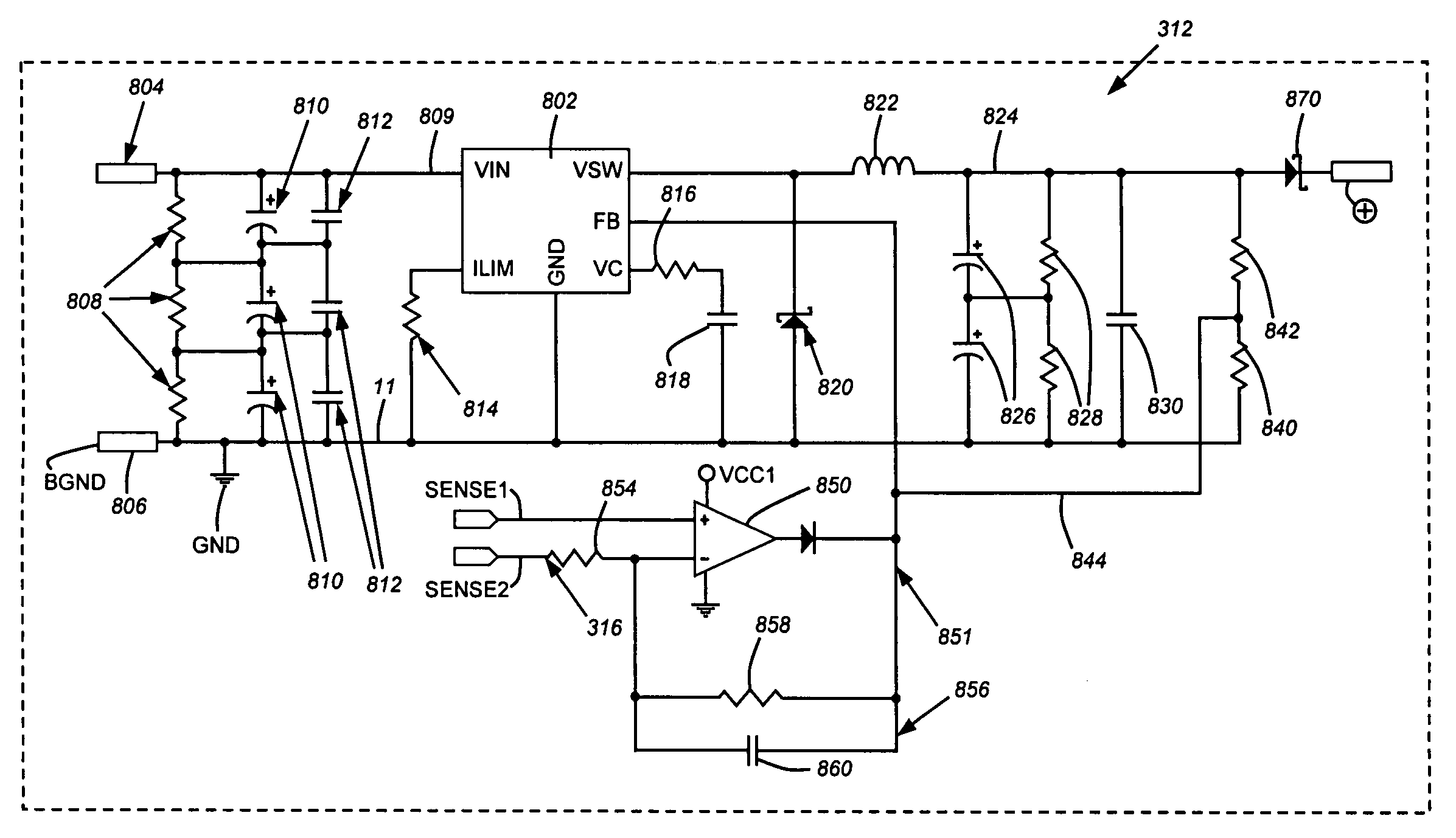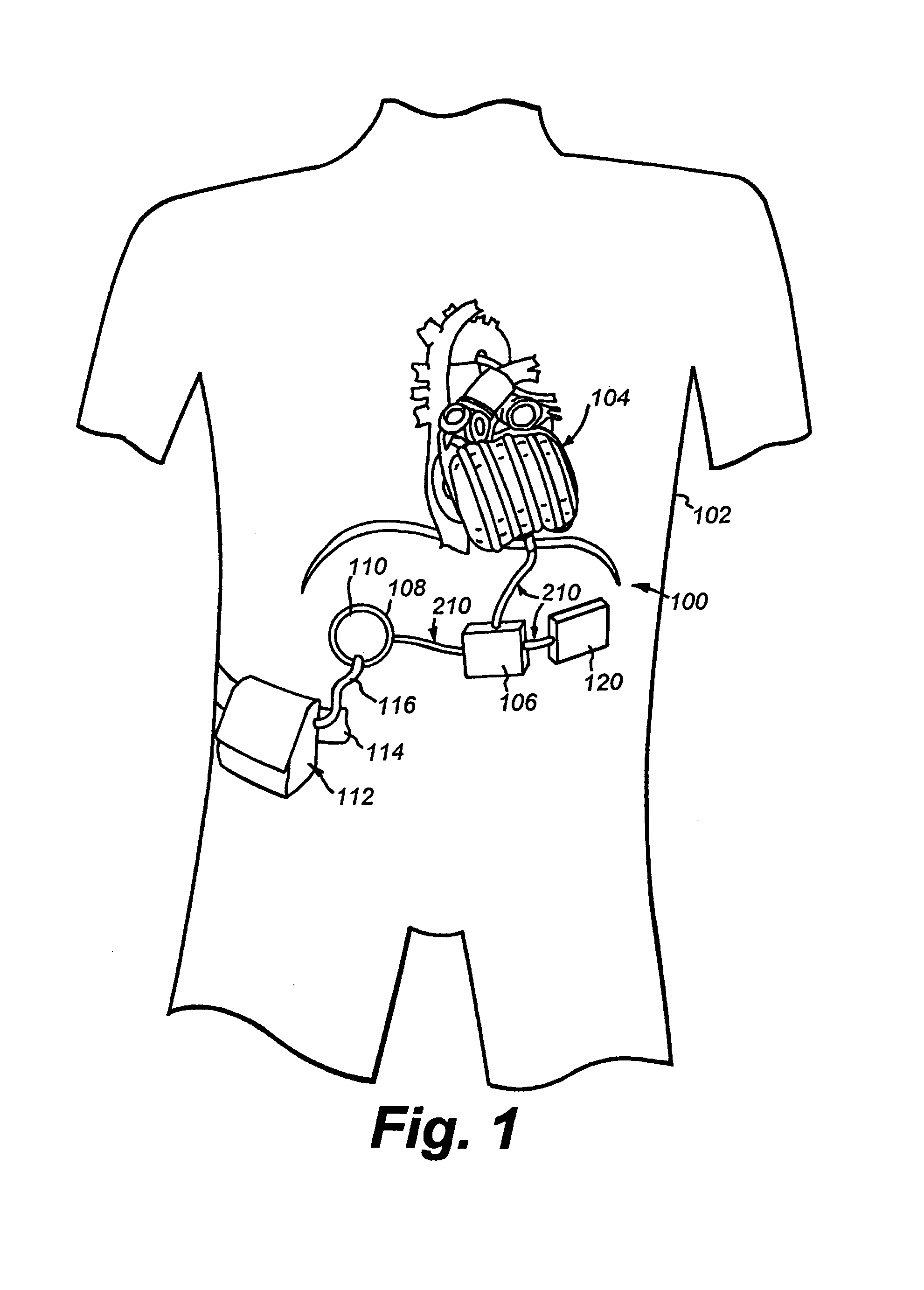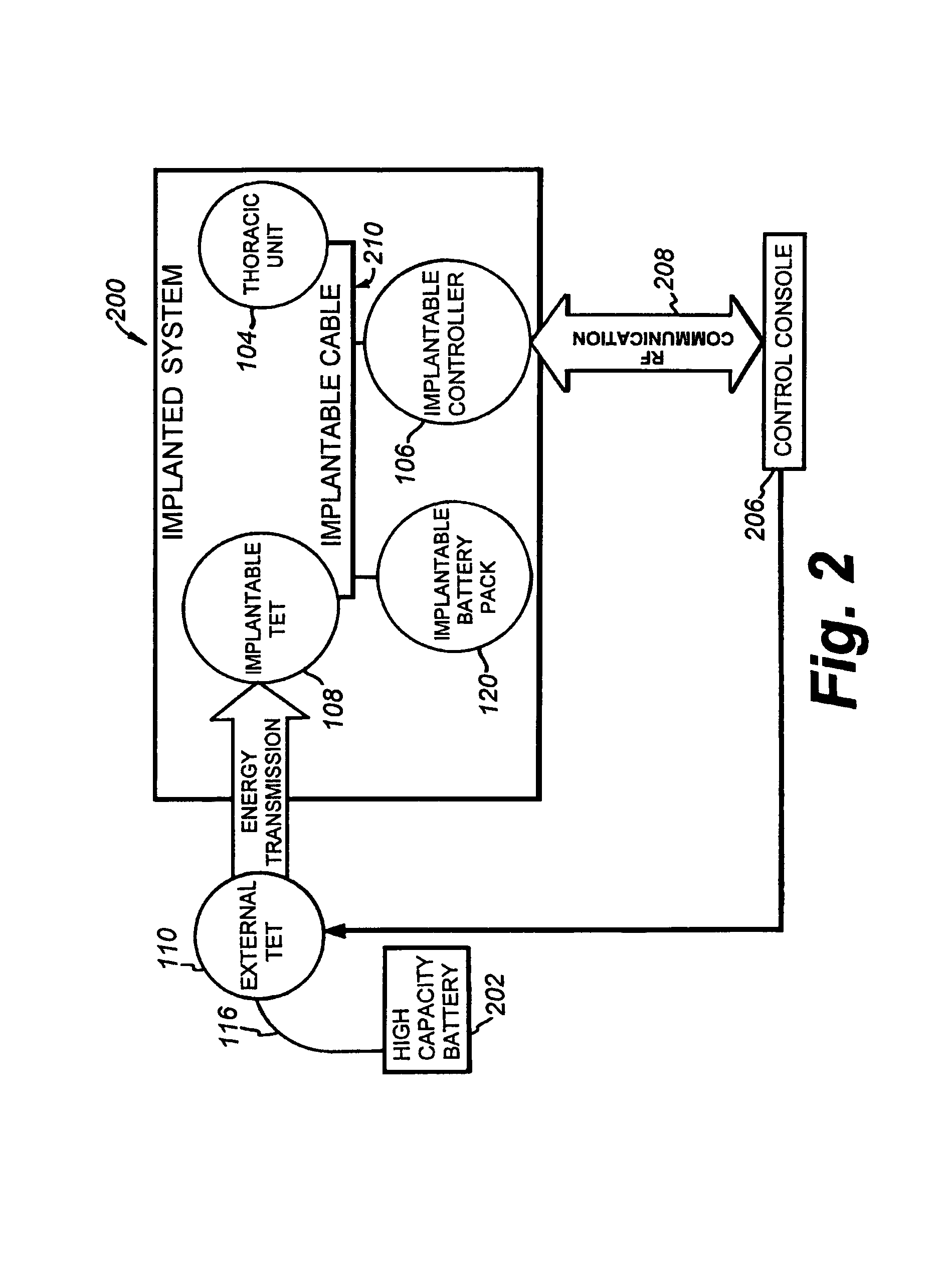Apparatus and method for balanced charging of a multiple-cell battery pack
a battery pack and battery technology, applied in the field of rechargeable battery packs, can solve the problems of reducing the overall battery capacity, and not exactly identical cells in performance and charging characteristics, so as to achieve the effect of not unduly delaying the charging process or significantly wasting power
- Summary
- Abstract
- Description
- Claims
- Application Information
AI Technical Summary
Benefits of technology
Problems solved by technology
Method used
Image
Examples
Embodiment Construction
[0024]FIG. 1 shows an exemplary life-saving system implanted in the thoracic region of a human body 102. In this example, the life-saving system is directed toward an artificial heart 104 such as the AbioCor™ replacement heart system developed by Abiomed, Inc. of Danvers, Mass. The system requires electric power to maintain pumping mechanisms that emulate the blood-circulatory action of the original heart and control functions that regulate pumping and other critical system parameters.
[0025]With reference also to the system-level block diagram 200 of FIG. 2, electric power and control information is delivered to the heart (the “thoracic unit”) through an implanted controller 106. In turn, the controller receives basic electric power input through an implanted transcutaneous energy transmission (TET) module 108. The implanted TET 108 resides beneath the skin of the body so as to eliminate any leads or wires exiting the skin. This reduces the possibility of infection and generally enh...
PUM
 Login to View More
Login to View More Abstract
Description
Claims
Application Information
 Login to View More
Login to View More - R&D
- Intellectual Property
- Life Sciences
- Materials
- Tech Scout
- Unparalleled Data Quality
- Higher Quality Content
- 60% Fewer Hallucinations
Browse by: Latest US Patents, China's latest patents, Technical Efficacy Thesaurus, Application Domain, Technology Topic, Popular Technical Reports.
© 2025 PatSnap. All rights reserved.Legal|Privacy policy|Modern Slavery Act Transparency Statement|Sitemap|About US| Contact US: help@patsnap.com



